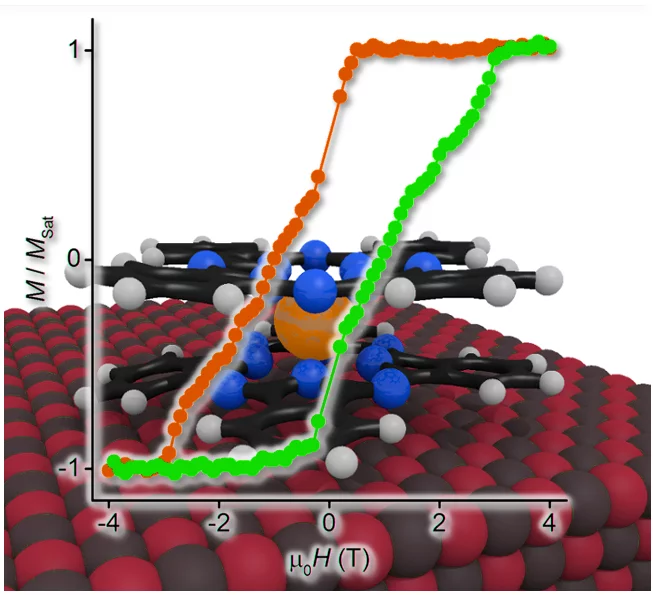A consortium of researchers from PSI and from EPFL has demonstrated that the magnetization lifetimes of TbPc2 single-molecule magnets is significantly influenced by the employed substrate on which the molecules are deposited. The molecular magnets adsorbed on magnesium oxide grown on a silver substrate exhibit record-wide magnetic hysteresis and record-large remanence. In contrast, when the molecules are deposited directly on the silver substrate, the magnetic hysteresis is barely visible. On both surfaces, the molecules are self-assembled into square-shaped islands with a strong easy-axis magnetic anisotropy perpendicular to the surface plane.
The published data have been obtained using X-ray magnetic circular dichroism at low temperatures down to 3 Kelvin and high magnetic fields up to 7 Tesla, which is able to determine the element-specific magnetic moments of the submonolayer of molecules present at the surface. Furthermore, scanning tunneling microscopy reveals the exact topography of the molecular assembly.
The results open up a path toward molecular magnetic tunneling devices within the framework of molecular spintronics, which exploits the peculiar properties of molecular magnets to perform information processing and storage tasks.
Contact
Dr. Jan DreiserLaboratory for Synchrotron Radiation — Condensed Matter Physics
Swiss Light Source, Paul Scherrer Institute
5232 Villigen PSI, Switzerland
Telephone: +41 56 310 58 95
E-mail: jan.dreiser@psi.ch
Original Publication
Giant Hysteresis of Single-Molecule Magnets Adsorbed on a Nonmagnetic InsulatorC. Wäckerlin, F. Donati, A. Singha, R. Baltic, S. Rusponi, K. Diller, F. Patthey, M. Pivetta, Y. Lan, S. Klyatskaya, M. Ruben, H. Brune, J. Dreiser
Advanced Materials 28, 5195 (2016).
DOI: 10.1002/adma.201506305

